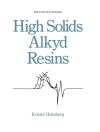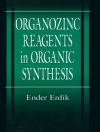Historically, regulations governing chemical use have often focused on widely used chemicals and acute human health effects of exposure to them, as well as their potential to cause cancer and other adverse health effects. As scientific knowledge has expanded there has been an increased awareness of the mechanisms through which chemicals may exert harmful effects on human health, as well as their effects on other species and ecosystems. Identification of high-priority chemicals and other chemicals of concern has prompted a growing number of state and local governments, as well as major companies, to take steps beyond existing hazardous chemical federal legislation. Interest in approaches and policies that ensure that any new substances substituted for chemicals of concern are assessed as carefully and thoroughly as possible has also burgeoned. The overarching goal of these approaches is to avoid regrettable substitutions, which occur when a toxic chemical is replaced by another chemical that later proved unsuitable because of persistence, bioaccumulation, toxicity, or other concerns.Chemical alternative assessments are tools designed to facilitate consideration of these factors to assist stakeholders in identifying chemicals that may have the greatest likelihood of harm to human and ecological health, and to provide guidance on how the industry may develop and adopt safer alternatives. A Framework to Guide Selection of Chemical Alternatives develops and demonstrates a decision framework for evaluating potentially safer substitute chemicals as primarily determined by human health and ecological risks. This new framework is informed by previous efforts by regulatory agencies, academic institutions, and others to develop alternative assessment frameworks that could be operationalized. In addition to hazard assessments, the framework incorporates steps for life-cycle thinking – which considers possible impacts of a chemical at all stages including production, use, and disposal – as well as steps for performance and economic assessments. The report also highlights how modern information sources such as computational modeling can supplement traditional toxicology data in the assessment process.This new framework allows the evaluation of the full range of benefits and shortcomings of substitutes, and examination of tradeoffs between these risks and factors such as product functionality, product efficacy, process safety, and resource use. Through case studies, this report demonstrates how different users in contrasting decision contexts with diverse priorities can apply the framework. This report will be an essential resource to the chemical industry, environmentalists, ecologists, and state and local governments.
Board on Chemical Sciences and Technology & Board on Environmental Studies and Toxicology
Framework to Guide Selection of Chemical Alternatives [EPUB ebook]
Framework to Guide Selection of Chemical Alternatives [EPUB ebook]
Beli ebook ini dan dapatkan 1 lagi GRATIS!
Bahasa Inggris ● Format EPUB ● Halaman 280 ● ISBN 9780309310161 ● Penerbit National Academies Press ● Diterbitkan 2014 ● Diunduh 3 kali ● Mata uang EUR ● ID 7144598 ● Perlindungan salinan Adobe DRM
Membutuhkan pembaca ebook yang mampu DRM












